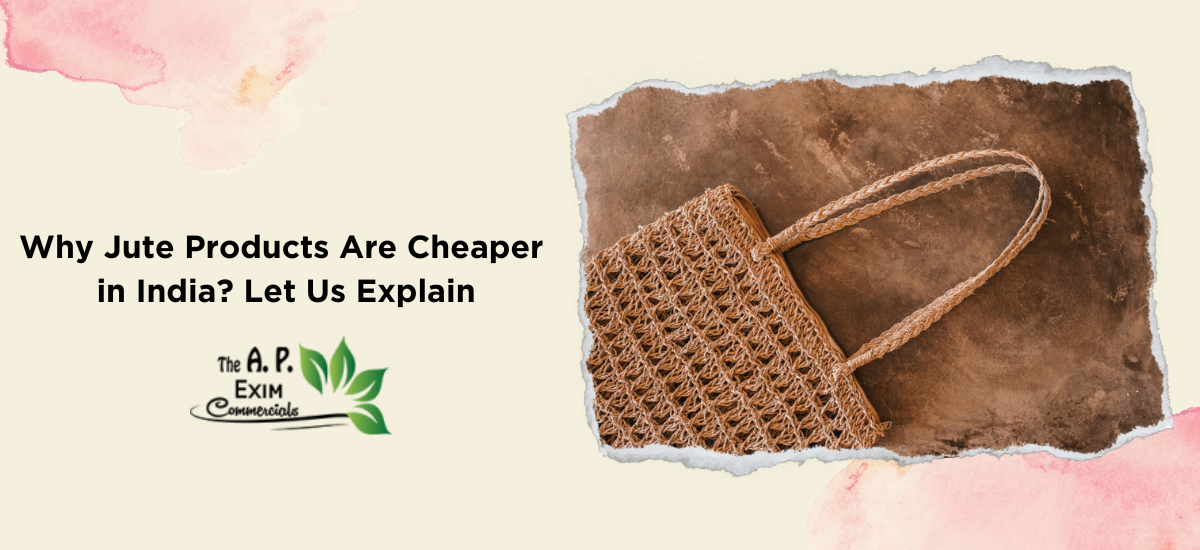Ah, jute! The golden fibre of India, whispering tales of tradition and sustainability. But when it comes to wallets, whispers turn to shouts: are jute products actually cheaper in India, the land where they sprout? Let’s unravel the threads of cost and see if jute jewels gleam brighter here.
Home Advantage For Jute Products: A Price Cut, Maybe?
India, the undisputed jute king, enjoys undeniable home advantages. The fertile Ganges delta nurtures jute like a mother, slashing production costs compared to other countries. Add to that a well-established industry with skilled labour and efficient processing, and you have a recipe for potentially cheaper Jute.

But the Yarn Gets Tangled…
However, the price equation isn’t as simple as multiplying raw material bounty by local expertise. Several factors can snag the thread of affordability:
Middlemen Markups: The journey from farm to finished product often involves a cast of characters, each adding their slice to the price pie. These middlemen’s margins can inflate the final cost, negating some of the home advantage.
Transportation Tangos: Depending on the product and its destination, shipping charges can weave a hefty web around the price tag. While domestic sales might skip the international tango, exports can feel the financial twirl.
Taxes and Tariffs: The invisible hand of government can also play a part. Taxes levied on raw materials and finished products can add layers of cost, especially when compared to countries with jute-friendly policies.
So, are Jute Jewels Cheaper in India?
The answer, like a handloom tapestry, is woven with threads of nuance. For domestically produced and consumed jute products, India certainly offers a price advantage. Local markets benefit from the absence of hefty shipping costs and potentially lower middlemen margins.
However, when it comes to exports, the cost calculus gets trickier. Taxes, international shipping, and competition from other jute-producing nations can make Indian jute less price-competitive globally.
Beyond the Bargain Bin: Value Beyond the Rupee
But affordability isn’t the only jewel in the jute crown. Indian jute products often boast superior quality and craftsmanship, passed down through generations of skilled artisans. This dedication to detail translates into durability, eco-friendliness, and unique aesthetics, values that resonate with conscious consumers even if the price tag whispers a bit higher.
Ultimately, whether Jute Jewels are cheaper in India depends on your perspective. If pure rupee-pinching is your priority, domestic options might shine brighter. But if you value quality, sustainability, and the magic touch of Indian craftsmanship, even a slightly higher price might feel like a bargain.
So, the next time you consider adorning your life with jute wonders, remember, the true worth lies not just in the price tag, but in the story woven into every thread. And that story, whispered by the looms of India, is priceless.
